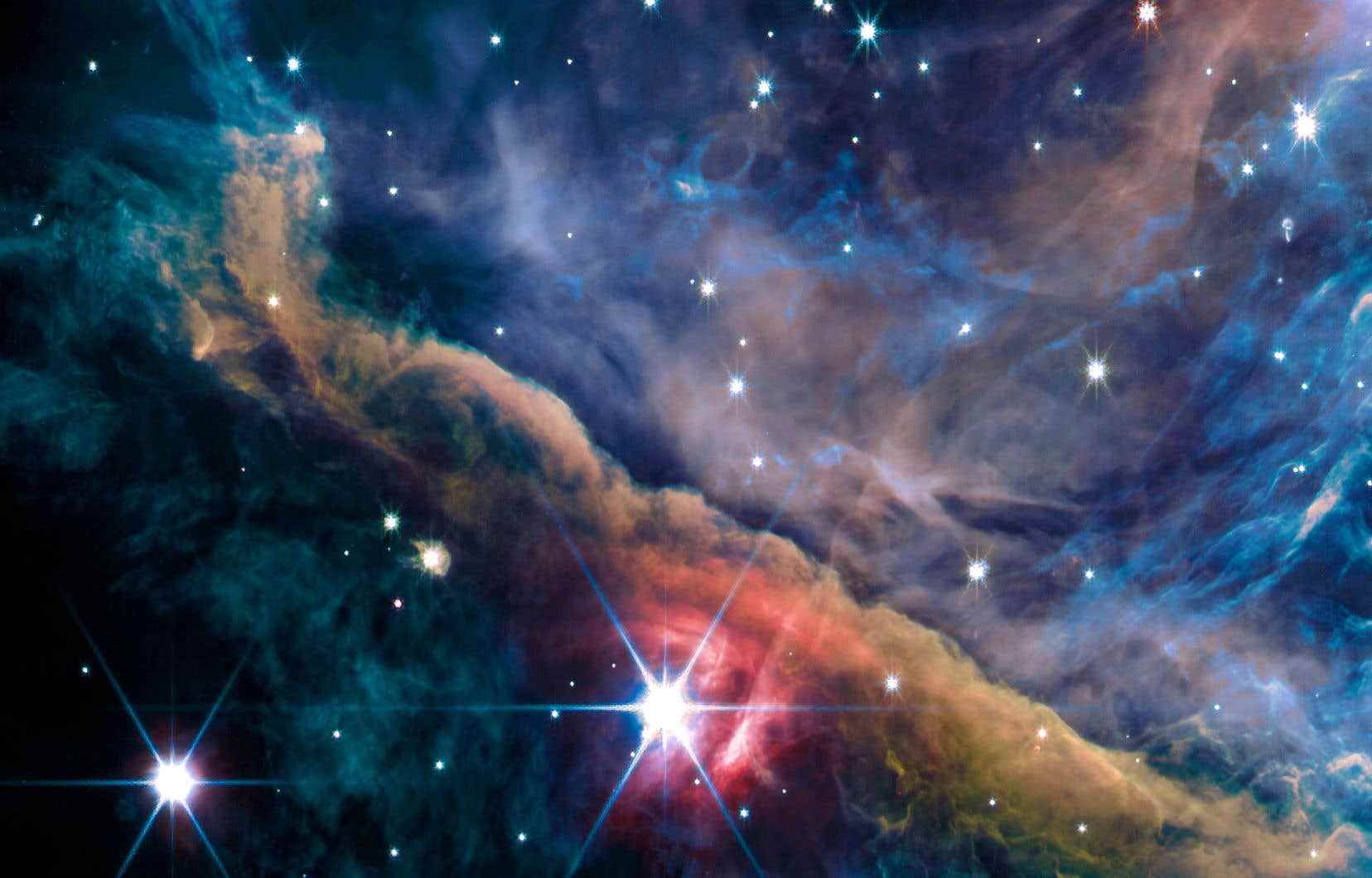Dramatic new images taken by the James Webb Space Telescope on Monday showed the Orion Nebula, whose cluster of gas and stellar dust form a vast winged creature with a star shining brightly at its center.
Located 1350 light-years from Earth, this celestial object appears to constitute an environment comparable to that in which our solar system was born 4.5 billion years ago.
The international team of researchers who published these unpublished images intends to study them in order to better understand the conditions which reigned during the creation of our system.
The recording is part of one of James Webb’s priority observation programs, and it involved more than a hundred scientists in 18 countries, with the help of the National Center for Scientific Research (France), Western University (Canada) and the University of Michigan (USA).
“We are blown away by the spectacular images of the Orion Nebula,” said astrophysicist Els Peeters of Western University in a statement. “These new observations allow us to better understand how massive stars transform the clouds of gas and dust in which they were born. »
Nebulae are obscured by large amounts of dust that make them impossible to observe in visible light with telescopes like Hubble, James Webb’s predecessor.
The latter, however, has tools that capture infrared light from the cosmos and that allow you to see through these layers of dust.
This technology has revealed awe-inspiring structures down to a scale of about 40 AU — one AU being roughly the distance between the Earth and the Sun.
Among them are a number of dense filaments of material that could support the birth of a new generation of stars as well as star systems in formation, consisting of a central star surrounded by a disc of dust and gas at inside which planets form.
“We hope to be able to understand the entire birth cycle of a star,” explains astrophysicist Edwin Bergin of the University of Michigan.
An engineering gem worth $10 billion, the James Webb Telescope conducts its observations 1.5 million kilometers from Earth.
